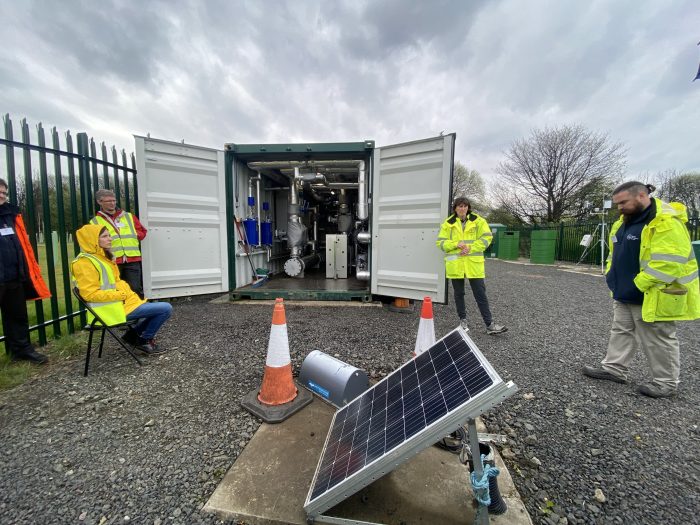
Geothermal Energy



“
One quarter of residential properties in the UK sit on coalfields
When underground mines are abandoned, the pumps that kept them dry are often switched off and the mines fill with water. This water is heated by geological processes, and maintains a stable temperature all year-round.
The UK Coal Authority has calculated that the constantly replenishing water within these mines has the potential to be a large enough resource to provide all of the heating requirements for these coalfield areas. It could also be used as heat and energy for horticulture, manufacturing, and other purposes.
An essential step towards meeting net zero targets is decarbonising heat in our homes and businesses. In the UK, historic coal mining has left a legacy of flooded, abandoned mines throughout the country. The water in these mines presents an opportunity for clean heat energy to contribute towards a sustainable future.
The Glasgow Observatory is a research facility designed for investigating this shallow, low temperature, mine water heat energy and potential heat storage resources.
The British Geological Survey (BGS) organised open days to invite delegates to take a tour around the Observatory to find out more about what the facility can offer to a potential user.
Pure energy (REGen) Ltd.’s CEO, Alan MacLeod and Graduate Energy Engineer, Yashodhara Bose visited the observatory on 27th April, 2023 at Cuningar Loop, Glasgow.

The observatory site is typical of towns and cities with a post-industrial urban and coalfield legacy.
Mine water heat abstraction is a technology that is proven but not widely realised, hence this observatory promotes research into questions that remain about this heat source, from size and sustainability to environmental impacts.
The observatory carries out experimental investigation of heat and fluid flow of mine water systems using boreholes, advanced monitoring and sensors and a flexible geothermal infrastructure for heating, cooling, and thermal storage.
The observatory features 12 boreholes penetrating flooded mine workings, bedrock, and superficial deposits at depths of 16-199 m. This enables observation of how warm water moves around the mine workings over time, and monitoring of changes in the water chemistry and to the physical and microbiological properties of the environment below the surface.

The observatory facilitates a wide range of investigative research in:
“
The observatory facilitates a wide range of investigative research opportunities
Mine water heat can be upgraded by heat pumps and delivered to homes and businesses through heat networks. If used for thermal energy storage, mines could become a strategic low carbon vector, storing heat generated from surplus renewable electricity and helping to deliver energy security and address the energy crisis.
The water in these mines is a low carbon, sustainable heat source, which under the right conditions can compete with public supply gas prices and deliver carbon savings up to 75% compared to gas heating.
Services (UK/International)
Technologies